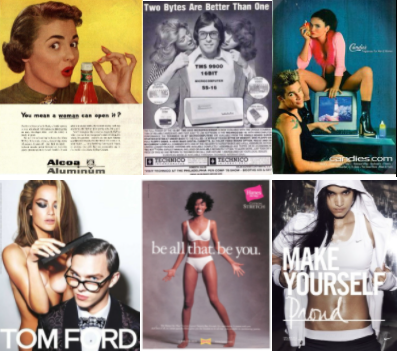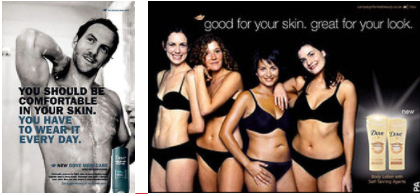Let’s get real about femvertising: the new way of ‘fixing’ women
July 2021
What does sexist advertising look like today? In the Mad Men era, advertising demeaned women and confined them to the kitchen. And we’re all too familiar with ads where women are hypersexualised. But today, ads also show us confident women and girls kicking goals and being astronauts. Has sexism disappeared, or is it just sneakier?

Empowerment is in

The term ‘femvertising’, coined by women’s lifestyle and digital media company SheKnowsMedia, who defined it as ‘advertising that employs pro-female talent, messages and imagery to empower woman and girls’. A point of pride. A positive change in how women were being represented in advertising. It was even used to name an award, first won by Dove’s 2004 ‘Real beauty’ campaign, which was intended to acknowledge and celebrate brands that shifted gender norms and broke down gender stereotypes.
But as more and more consumers call for brands to take action on gender equality, brands and creatives have exploited femvertising to promote their products as ’empowering women’. Femvertising has morphed into a trend designed to sell more products to women, and no longer involves genuine subversion and transformation of gender stereotypes.
Femvertising has lost its authenticity and consumers are calling out advertising for piggybacking on feminism to promote products that aim to ‘fix’ women. Modern femvertising is advertising that tells women they can be anything or do anything they want – with the help of the right product.
But these messages are often fake, condescending and still trade in harmful ideas about what makes a woman ‘good enough’.
A new way of ‘fixing’ women
The issue with the type of ‘empowerment’ promoted in femvertising is that it still focuses on ‘fixing’ women, write Jane Cunningham and Philippa Roberts, authors of Brandsplaining: Why Marketing is (Still) Sexist and How to Fix It. Advertising of the past aimed to ‘fix’ women through shame – telling them to cover up and lose weight and aspire to an idealised beauty standard where every woman was thin, white and able-bodied.
Now, with femvertising pushing the narrative that women can do anything, “what this usually means is shifting attention from telling women how to look, to telling them how to behave,” explain Cunningham and Roberts.

These ads tell women it’s their responsibility to change, be strong, lean in and do it all. In reality, women face a whole swathe of barriers to equality that aren’t of their own making. A Nike sports bra ad that tells women they should be strong isn’t feminism; it’s patronising and dismissive of the real struggles women face.
But there is a way for ads and brands to show consumers that they respect the agency and equality of women, without talking down to them.
Treating women as passive consumers
When we compare femvertising with marketing towards men, we can see that ads for men don’t carry the same patronising tone. Advertisers show men how their products can work for their lifestyle and treat the consumer as smart enough to decide if it does or not.



Brands are still treating women as passive consumers, rather than discerning, active consumers who don’t need to be told who to be, what to do or how to behave.
Women are looking for ads that engage them, treat them as equals and as real people. When ads get it right, consumers notice. For example, Libra’s successful #BloodNormal campaign – one of the first ads to represent period blood as red – was praised by consumers tired of ads showing women skipping and dancing on their periods.
If advertisers and brands actually care about women’s empowerment, they need to get real. Women want products that work for them, and ads that reflect them. It is the difference between seeing the female consumer as weak, hesitant and in need of a pep talk, and portraying women as strong, smart, discerning and socially motivated.
What consumers need is real representation, not faux empowerment. Research shows that realistic portrayals of women in ads increase purchase intent by 26% among all consumers and 45% among women.
Advertising also needs to get better at representing women’s diversity, and not just for diversity’s sake. While femvertising spearheaded the portrayal of a broader range of female body types, skin colours, interests and occupations, representations of diversity are often still tokenistic. Women who don’t conform to stereotypical Western beauty ideals are not portrayed in active, leading roles, but relegated to the sidelines. Advertising needs to move beyond ticking the ‘diversity’ box and get real about representing women of all colours, sizes, abilities and sexualities.
You can take the first step by making a pledge to create advertising that values and represents women as they are, and moves us towards advertising equality.
In part two of this series, we will explore brands and ads that are getting it right and getting equal.









